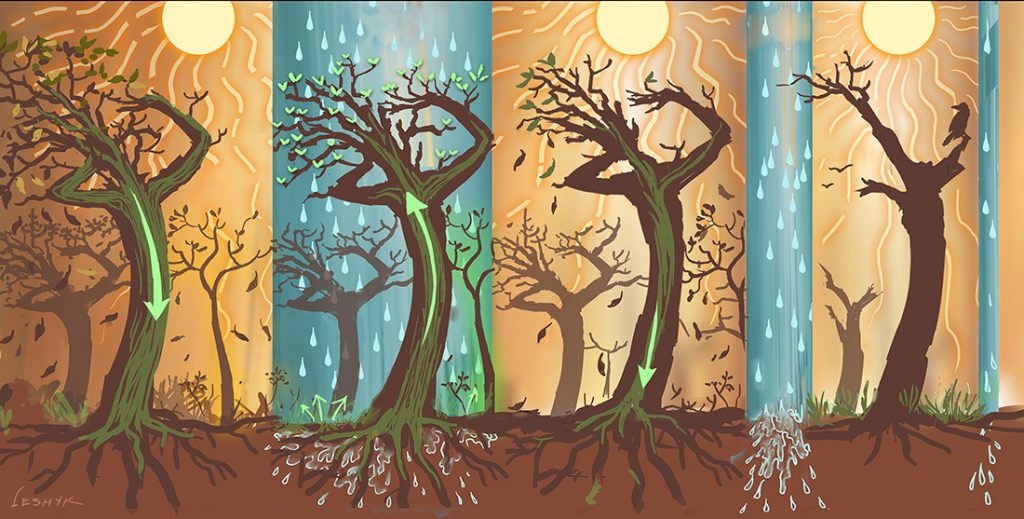By Kerry Bennett
Office of the Vice President for Research
In a new paper published in Nature, research assistant professor Christopher Schwalm of Northern Arizona University’s Center for Ecosystem Science and Society (Ecoss) shares the results of a study investigating the impact of more frequent droughts on ecosystem resiliency and how this phenomenon could endanger the land carbon sink.
Earth’s land carbon sink comprises all the planet’s soils and vegetation, including forests, grasslands and agricultural land. Currently absorbing an estimated 50 percent of carbon dioxide emitted into the atmosphere from human activities, the land carbon sink mitigates carbon dioxide effects on global climate change. The most widespread climatic extreme that negatively affects the land carbon sink is drought.
Schwalm is the lead author of the paper “Global patterns of drought recovery,” representing the work of an interdisciplinary team of scientists, including NAU professor George Koch, also of Ecoss; associate professor of informatics and computing Kiona Ogle; and associate professor of climate science Deborah Huntzinger.
By studying ecosystems as diverse as the tropics and the high northern latitudes, the scientists established drought recovery times are strongly associated with climate and the carbon cycle and are a critical metric for drought impact.
As droughts become more frequent and more severe, researchers believe the time an ecosystem needs to recover, or revert to its pre-drought functional state, may become longer than the time between droughts. These chronic conditions will impair the normal functioning of plants and trees in an ecosystem, the researchers theorize, resulting in widespread degradation of the land carbon sink.
“Current understanding of drought recovery has generally focused on precipitation that ends a drought by alleviating water deficit, as opposed to restoring function in plants, where recovery is often assumed to be rapid and complete once hydrological drought is ameliorated,” Schwalm said. “Yet the time needed for plant function to recover is critical for ecosystem function, because if a new drought arrives before full recovery, an ecosystem may transition to a new state.
“Recovery time is thus a critical metric for assessing ecosystem resilience, as this time scale shapes the odds of crossing a ‘tipping point.’ In the context of drought, tipping point thresholds are associated with widespread tree mortality—and concomitant degradation in land carbon uptake.”
At NAU, Schwalm’s climate science research focuses on how carbon, water and plant nutrients cycle through land systems. He examines the natural and global change drivers of terrestrial biogeochemistry, including extensive work on the impact of drought on carbon cycling and ecosystem response and recovery from drought events. He also performs research on improving carbon cycle predictability in Earth system models, statistical upscaling and machine learning to advance current and future understanding of land-atmosphere exchange



